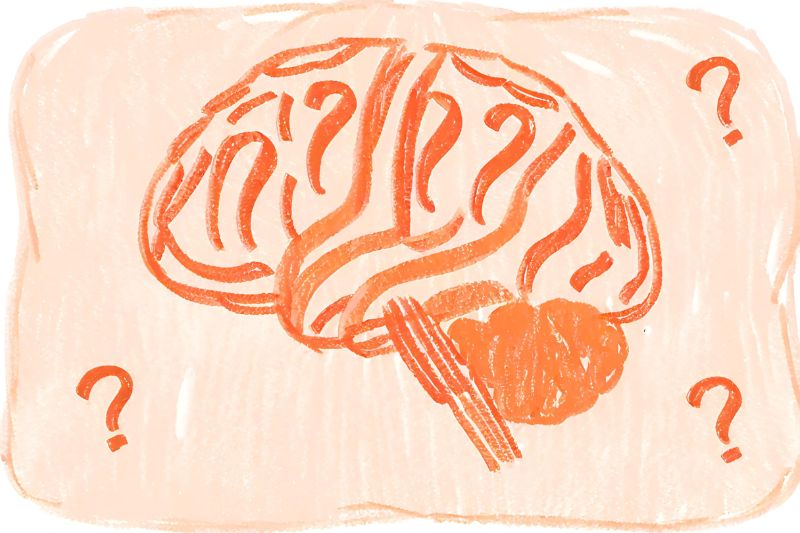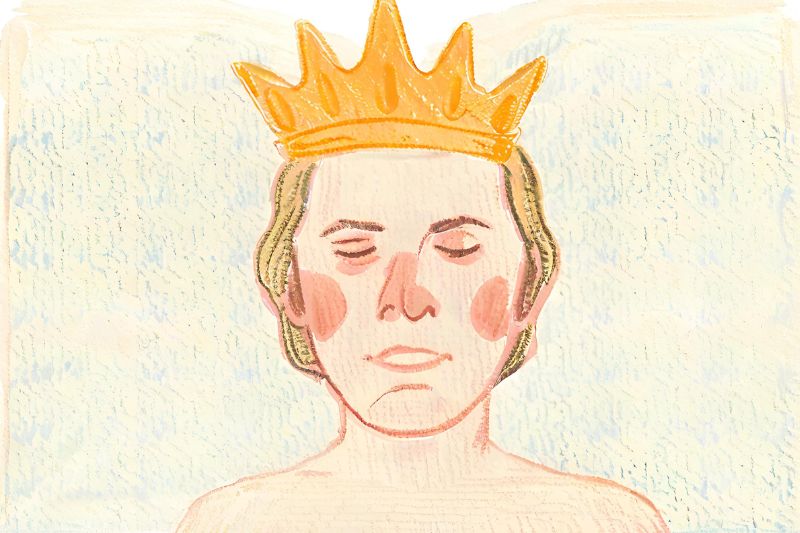Anxiety Before Your Period: Why It Occurs and How to Manage It
Experiencing anxiety before your period is very common. In this article, we'll explore why it occurs, when it might be a sign of a more serious condition and how to cope.

It’s common knowledge that the menstrual cycle can wreak havoc on the body. In the days leading up to that dreaded time of the month, you might experience anything from headaches and bloating to stress and mood swings. But is it normal to experience anxiety before your period?
Though it tends to fly under the radar in comparison to other symptoms, premenstrual anxiety is quite common. In this article, we’re going to explore why it happens and when it might be a sign of a more serious condition. We’ll also offer up some tips on how to cope with your period anxiety.
Table of contents
- Anticipatory anxiety
- Premenstrual syndrome (PMS)
- Premenstrual dysmorphic disorder (PMDD)
- Premenstrual exacerbation (PME)
- How to cope with anxiety before your period
- When to find help
Anticipatory anxiety
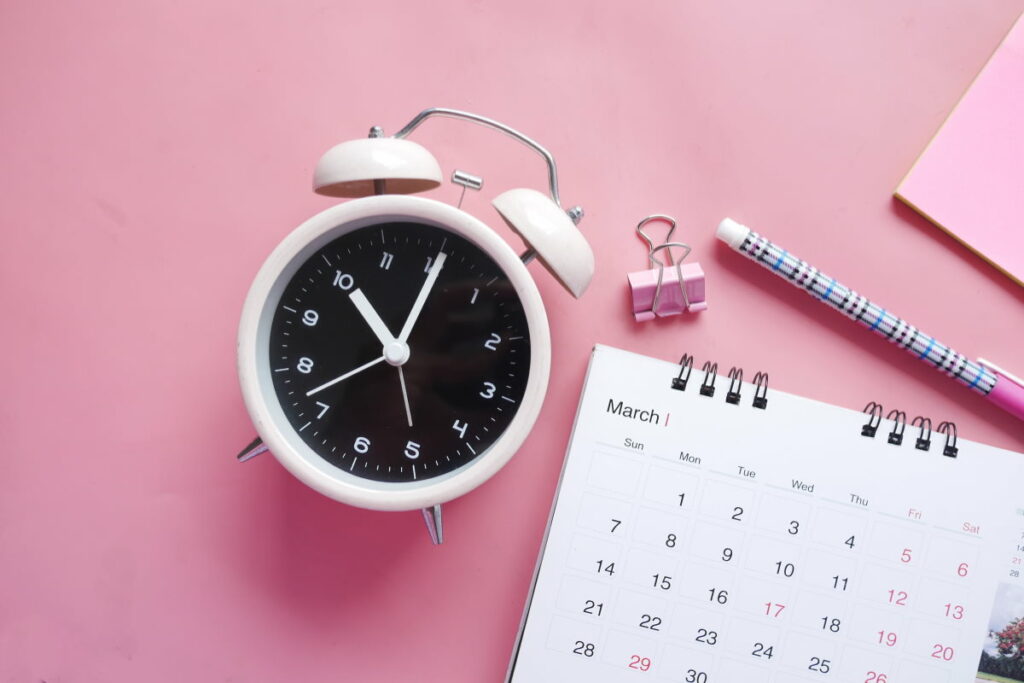
The average woman will have a period every 28 days. Though it may be a regular occurrence, it’s not an experience many look forward to. Common symptoms include:
- Cramps in the lower abdomen, back and upper thighs
- Bloating
- Acne
- Breast tenderness
- Moodiness
- Issues with sleeping
The intensity of these symptoms can vary from person to person. Some will experience little to no pain and few symptoms, making periods a mild inconvenience. Others, however, experience debilitating pain that makes it difficult to complete daily tasks.
With this in mind, it’s no surprise to learn that some people experience anticipatory anxiety on the days leading up to their period.
Did you know?
The average woman will have approximately 480 periods between the ages of 12 and 52!
Premenstrual syndrome (PMS)
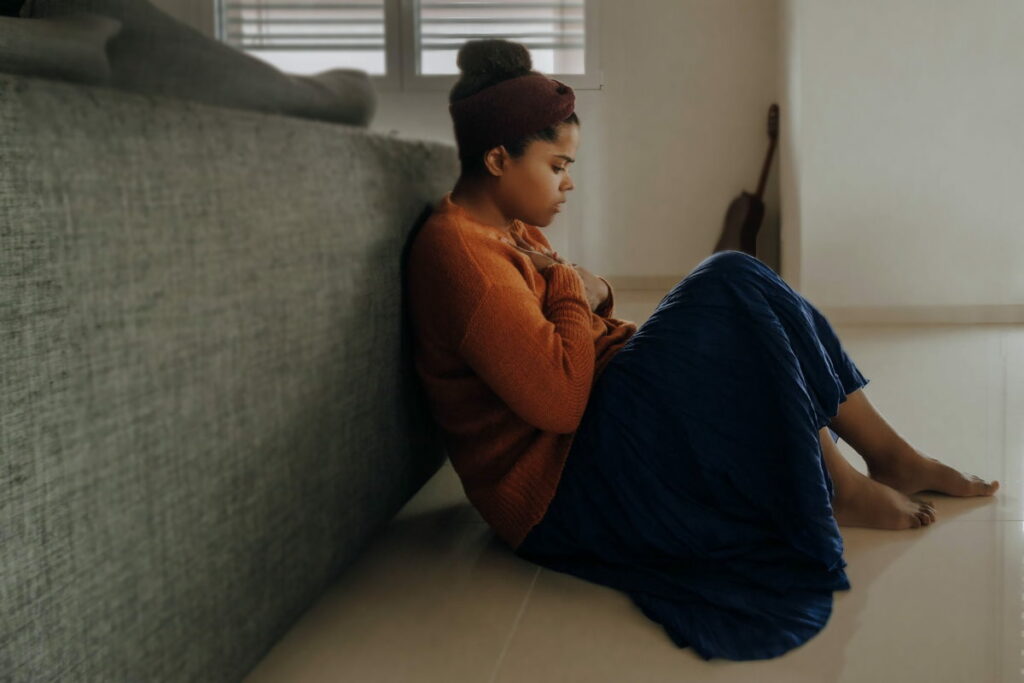
According to the NHS, premenstrual syndrome (PMS) is the name for the emotional, physical and psychological symptoms that women can experience for approximately one to two weeks before the start of their period. It’s estimated that as many as three in every four menstruating women will have experienced some form of PMS in their lifetime.
PMS occurs during the luteal phase of the menstrual cycle. This phase begins after ovulation and ends once you get your period. It generally lasts around 12 to 14 days.
Want to know more about the phases in the menstrual cycle? Read about it in Livi’s menstrual cycle guide or watch the video below!
Is it normal to experience anxiety before your period?
Approximately 150 psychological, behavioural and physical symptoms are associated with PMS, and anxiety is one of them. It’s not entirely clear how many women are affected by premenstrual anxiety, or why some experience it and others don’t.
Most women will only experience a handful of symptoms from the list below.
Psychological and emotional symptoms
- Low mood
- Sadness
- Irritability
- Anger
- Anxiety
- Depression
Behavioural symptoms
- Changes in appetite
- Issues with sleeping
- Poor concentration
- Forgetfulness
- Changes in libido
- Lack of interest in activities
Physical symptoms
- Headache
- Tiredness
- Bloating
- Breast tenderness
- Acne
- Hot flushes
- Constipation or diarrhoea
- Intolerance to alcohol
- Weight gain
The severity of these symptoms will vary depending on the person, but they will generally dissipate once menstruation begins.
What does premenstrual anxiety feel like?
Premenstrual anxiety can cause someone to experience intense feelings of dread, fear and uncertainty. It can include symptoms like:
- Restlessness
- Irritability
- Difficulty concentrating
- Increased heart rate
- Sweating
- Fatigue and tiredness
- Sense of impending doom
- Digestive issues
So, what separates premenstrual anxiety from anxiety experienced any other time of the month?
Those dealing with premenstrual anxiety are likely experiencing other PMS symptoms as well, which can either intensify their anxiety or overwhelm them to the point where they don’t feel like they can manage.
In other words, if premenstrual anxiety was the only symptom you were dealing with, you might be able to manage it well enough. When it’s added to symptoms like low mood, bloating and a lack of sleep, it might be the straw that breaks the camel’s back!
Why does PMS occur, and how does it cause anxiety?
The exact cause of PMS is currently unknown, but changes in hormone levels during the menstrual cycle are believed to be involved.
During the luteal phase, the levels of reproductive hormones like oestrogen and progesterone rise and fall dramatically. This can affect a range of neurotransmitters in the brain that are responsible for mood, pain and pleasure, causing them to fluctuate and wreak havoc on the body.
- Serotonin plays an essential role in body functions like mood, sleep, digestion, etc. When it fluctuates, it can result in depression, anxiety and issues with sleeping.
- Dopamine is the ‘reward centre’ in the brain—letting you feel pleasure and motivation. Changes to this neurotransmitter can cause tiredness, irritability and a lack of motivation.
- Gamma-aminobutyric acid (GABA) produces a calming effect on the body. When altered, it can result in anxiety, depression and insomnia.
- Endorphins can help the body to cope with pain and stress. When the levels are low, however, it can lead to anxiety, depression, mood swings and general pain.
A 2008 study suggests that certain women are more sensitive to these hormonal fluctuations than others, which is why they might experience more intense PMS symptoms than others.
When does premenstrual anxiety stop?
If you’re experiencing premenstrual anxiety, its effects should wear off once you start your period. During this phase of your cycle, your hormone levels will begin to level out once more, and you shouldn’t be experiencing any PMS symptoms.
Whilst it can be reassuring to know that your premenstrual anxiety is temporary, this knowledge might not be enough to help you cope with it going forward. If you’re looking for ways to manage it, skip to our tips for coping with anxiety before your period!
If you’re feeling a much more intense form of anxiety in the days leading up to your period, it might not be a result of PMS. Instead, you could be experiencing what’s known as premenstrual dysmorphic disorder.
Premenstrual dysmorphic disorder (PMDD)
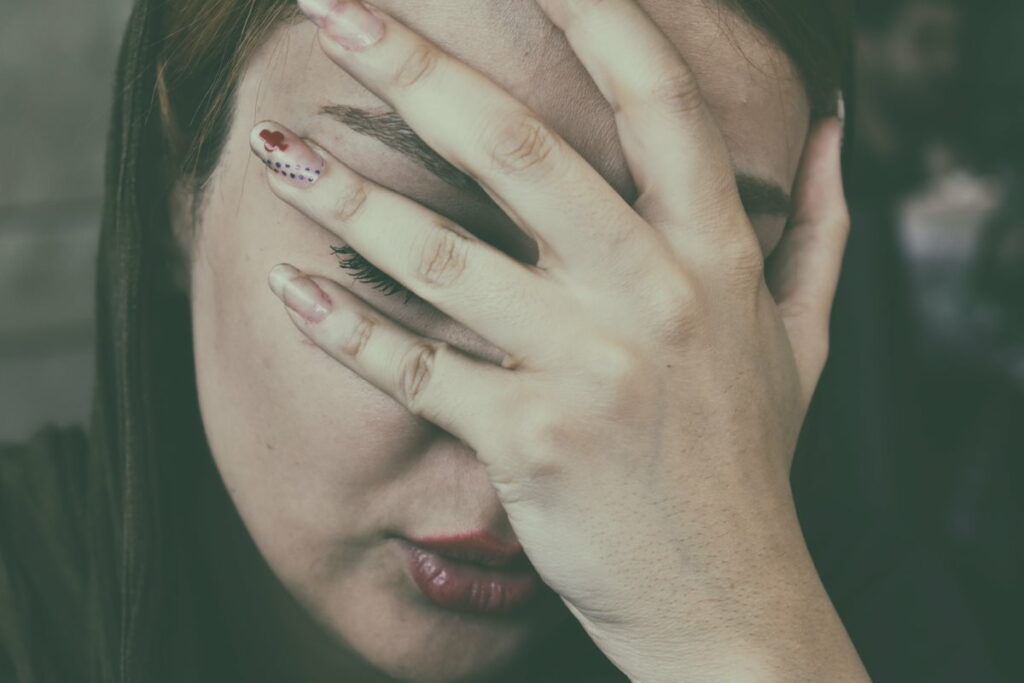
Approximately 3 to 8% of menstruating women experience a more severe form of PMS: premenstrual dysphoric disorder (PMDD). Like PMS, this condition occurs during the luteal phase and affects women of childbearing age.
In addition to common PMS symptoms, women may experience some of the following:
Psychological and emotional symptoms
- Depression
- Anxiety
- Intense irritability and anger
- Extreme mood swings
- Feeling tense and on edge
- Suicidal thoughts
- Frequent crying
- Feeling hopeless or overwhelmed
- Emotional sensitivity
- Paranoia
Behavioural symptoms
- Binge eating
- Intense food cravings
- Insomnia
- Lack of interest in activities or relationships
- Trouble focusing or thinking
- Extreme tiredness and fatigue
Physical symptoms
- Cramps
- Bloating
- Breast tenderness or swelling
What does PMDD feel like?
Unlike PMS symptoms, which can largely be ignored or surmounted through specific remedies, PMDD symptoms are debilitating enough to interfere with daily routines, general functioning and close relationships. A 2017 study indicates that those with untreated PMDD may experience a loss of three quality-adjusted life years (QALY).
Watch the video below to find out what it’s like to live with PMDD:
For PMDD to be diagnosed:
- Patients must record their symptoms for at least two full menstrual cycles
- They need to experience at least 5 of 11 specific PMDD symptoms for most of the week before their period
- Their symptoms must be minimal or absent during menstruation
- The symptoms must be debilitating enough to interfere with daily routines and function
If you think you might have PMDD, use IAPMD’s printable tracker or digital tracker to record your symptoms. You can then share this information with your GP to help them make the correct diagnosis.
Why does PMDD occur?
PMDD was only added to the DSM in 2013, so, unsurprisingly, research into the causes behind this condition is still in the early stages. Like PMS, the reason why some women experience PMDD and others don’t still hasn’t been discovered.
The same hormonal fluctuations mentioned earlier in ‘Why does PMS occur?’ may also be behind the symptoms of PMDD, especially for women who are particularly sensitive to these changes.
Other potential risk factors include:
- Genetics: women with a family history of PMS, PMDD, depression, postpartum depression, or other mood disorders are likely to present with PMDD.
- Smoking: some research has shown a statistically significant association between smoking and PMS and PMDD.
- Trauma: studies have highlighted an association between trauma exposure, PTSD and PMDD symptoms.
How to treat PMDD
Though PMDD symptoms should resolve themselves once menstruation starts, their severity and intensity will require you to seek treatment.
Potential treatment options include:
- Antidepressants: SSRIs might be prescribed to reduce symptoms of PMDD. You can take them all month or only during the interval between ovulation and the start of your period.
- Hormonal birth control: birth control pills with no pill-free intervals may help to reduce symptoms of PMS and PMDD for some women.
- Diet and lifestyle changes: as we’ll mention in our anxiety tips, making changes like exercising more, taking supplements and reducing caffeine/alcohol intake can ease your PMS and PMDD symptoms.
Some women may find that their PMDD symptoms become more severe over time, lasting until they reach menopause. As such, they will likely need to continue treatment for a prolonged period of time.
PMDD can cause severe emotional distress and negatively affect your daily life and close relationships. If you’re experiencing suicidal thoughts and are worried you may act on them, you can find help and support with these free helplines.
If your anxiety persists even after you’ve started your period, you might be dealing with premenstrual exacerbation.
Premenstrual Exacerbation (PME)

Premenstrual Exacerbation (PME) and premenstrual dysphoric disorder (PMDD) are similar conditions with near identical symptoms.
PME occurs when the symptoms of a pre-existing mental health condition, like generalised anxiety disorder, are exacerbated during the luteal phase of your menstrual cycle.
According to IAPMD, conditions that can be exacerbated premenstrually include:
- Anxiety disorders
- Depression
- Persistent depressive disorder
- Suicidality
- Schizophrenia
- Alcoholism
- Eating disorders
The difference between PMDD and PME is that women with PME will experience their symptoms for the entire month, with symptoms increasing in intensity during the weeks before their period.
Unfortunately, PME is still lagging behind in terms of research. Unlike PMDD, it is not yet an official diagnosis in the DSM, and it is not yet treated clinically.
How to treat PME
If you suspect you have PME, but have not been officially diagnosed with an anxiety disorder, then you need to head to your GP as soon as possible. They will be able to recommend treatment to help manage your anxiety throughout your entire cycle, not just the luteal phase.
If you’ve already been diagnosed with an anxiety disorder, your GP may recommend increasing the dosage of your medication to reduce the intensity of your premenstrual anxiety.
How to cope with anxiety before your period

You can make several changes to your lifestyle and diet to help reduce your premenstrual anxiety and other PMS symptoms.
While these changes may also benefit those suffering from PMDD and PME, we would advise you to consult your GP to seek out additional treatment options to ease the severity of your symptoms.
1. Connect with others
Dealing with premenstrual anxiety and other symptoms associated with PMS, PMDD, or PME all by yourself can be incredibly challenging, especially if you don’t know anyone else who is experiencing the same problem(s).
Fortunately, thanks to the internet, you can easily connect with people who can relate to your issues. If you head over to Reddit, you can find threads dedicated to people looking for help, advice and a place to vent when dealing with PMS and PMDD.
Knowing that others are suffering from the same symptoms as yourself can help normalise your anxiety, make you feel less isolated and increase your ability to manage.
If you're using social media platforms to connect with people, make sure to fact-check everything you consume mental health misinformation is common on TikTok, for example.
2. Track your cycle
If you know when you might feel more anxious during any given month, you can prepare in advance and find ways to reduce your anxiety before it becomes too intense to manage. You can do this by tracking your cycle!
There are plenty of period tracking apps available, such as:
Once you’ve tracked a few periods, these apps can predict future cycles and show you when your luteal phase is near.
Most period tracking apps will also allow you to track your mood and specific symptoms throughout your cycle. This will give you the opportunity to observe how your mood and body can change throughout the month. You can download the NAPS menstrual chart if you’d prefer to keep a written record.
3. Exercise
Research shows that regular exercise can help improve anxiety, stress and depression and also help minimise the severity of certain PMS symptoms. An eight-week study of the effects of regular aerobic exercise on PMS saw a significant reduction in the incidence of physical and psychological symptoms.
Your choice of exercise will depend entirely on how you feel physically. If you’re dealing with muscle aches and breast tenderness, for example, doing a five-mile run is probably out of the question, but a brisk walk could do you a world of good.
If you’re pressed for space, you might consider following some low-impact, guided workouts on YouTube:
- 14-minute full body workout for PMS & period
- 20-minute workout + stretch on period & PMS
- 15-minute period yoga for menstrual cramps relief
4. Relax
Incorporating relaxation techniques into your daily routine may help to reduce your stress and premenstrual anxiety. To calm your mind, consider:
- Guided meditation with YouTube videos
- Breathing exercises like square breathing, diaphragmatic breathing and counting breaths
- Practising everyday mindfulness
- Guided progressive muscle relaxation before bed
You could even try to distract yourself with one of your hobbies!
5. Change your diet
Making small changes to your diet can have a significant impact on the symptoms you experience during your luteal phase.
- Eating smaller portions of food throughout the day can help you avoid bloating.
- Limiting your alcohol and caffeine intake can improve sleep, help you avoid digestion issues and reduce potential irritability and anxiety (because hangxiety is a real thing!).
- The omega-3 fatty acids in fish may reduce specific symptoms of PMS, including depression, anxiety, bloating, headache and breast tenderness.
- Complex carbohydrates like whole grains, fruit and vegetables can help you to cope with the intense cravings brought on by your PMS and anxiety.
- Reducing the amount of salt you consume will minimise water retention and bloating.
- Supplements like vitamin B6, calcium, vitamin D and magnesium may help to ease your PMS symptoms (though you’ll need to check with your GP if you’re taking medicine).
6. Get plenty of sleep
A lack of sleep will undoubtedly make everything seem worse when you’re in the luteal phase of your cycle. The last thing you want is to deal with horrible cramps and poor concentration when you’re completely exhausted.
So, if you can, try to get at least seven hours of sleep a night. This will give you the energy you need to tackle the day ahead. If you’re struggling to get enough sleep, we’d recommend:
- Sticking to regular sleep hours to teach your body when to sleep
- Avoiding caffeine and alcohol close to bedtime
- Trying guided sleep meditation or sleep hypnosis
When to find help
If you’re not able to manage your premenstrual anxiety and other related symptoms with lifestyle changes and our other tips, it’s time for you to get professional help. A GP can recommend treatments like anti-anxiety medications, short-term or long-term antidepressants and hormonal contraceptives.
Cognitive Behavioural Therapy (CBT) might also be helpful for easing your premenstrual anxiety. This type of therapy helps patients recognise their negative thought patterns and learn essential coping mechanisms that will help them manage their anxiety.
If you’d like to get started, fill out our contact form or head to our therapy services page. Together with one of our experienced therapists, you’ll get to work on managing your premenstrual anxiety.
Post Date:
Author: Bethany Hall
Explore More Articles
3 Mental Health Myths Your Therapist Is Sick of Hearing
It's great that more people are talking about mental health, but not everything you hear is necessarily true. Don't fall for these 3 mental health myths!
Feeling Worried? Challenge Anxious Thoughts with These Simple Questions
Stuck in a spiral of anxious thoughts? Use these 3 simple questions to challenge negative thinking and adopt a healthier mindset.
ManageMinds Explains... Narcissists
Even wondered if you or someone you know may be a narcissist? In this guide we cover what narcissistic personality disorder is, as well as the signs you need to watch out for.

